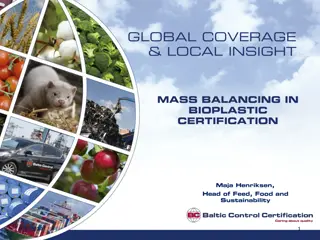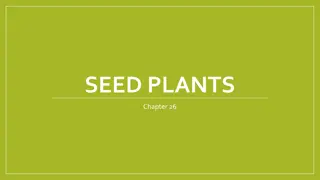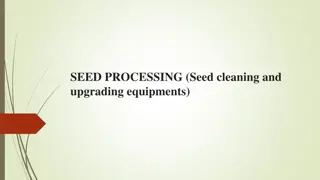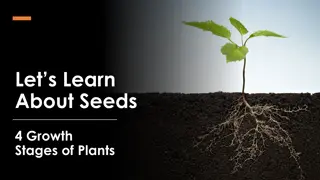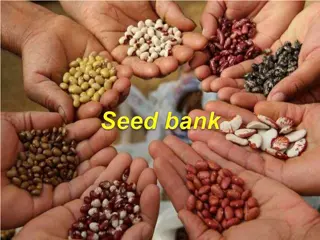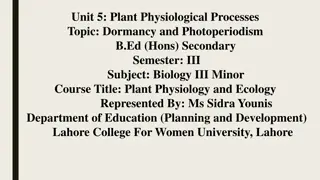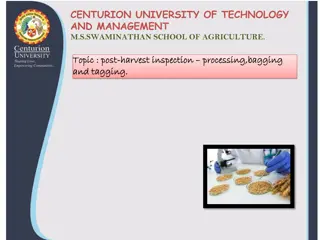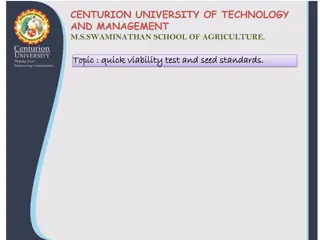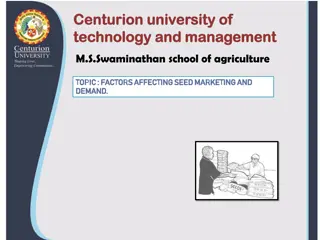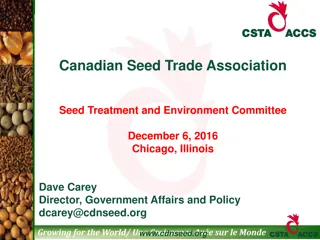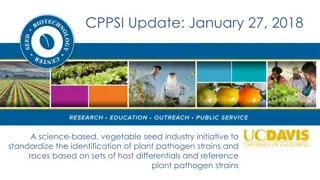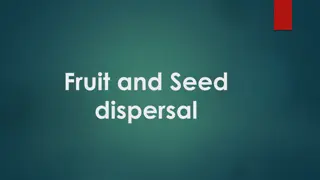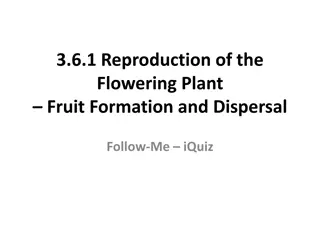Native Plant Seed Collection: A Guide to Conservation and Sustainability
Explore the valuable practice of collecting native plant seeds to preserve biodiversity, restore ecosystems, and promote sustainable land management. Learn about seed collection ethics, when to collect seeds, and seed germination methods for various species.
Download Presentation

Please find below an Image/Link to download the presentation.
The content on the website is provided AS IS for your information and personal use only. It may not be sold, licensed, or shared on other websites without obtaining consent from the author.If you encounter any issues during the download, it is possible that the publisher has removed the file from their server.
You are allowed to download the files provided on this website for personal or commercial use, subject to the condition that they are used lawfully. All files are the property of their respective owners.
The content on the website is provided AS IS for your information and personal use only. It may not be sold, licensed, or shared on other websites without obtaining consent from the author.
E N D
Presentation Transcript
Getting Started In Native Plant Seed Collecting
Conservation Restoration Why Collect Seeds for Native Plants Adaptation Education and Research Sustainable Landscaping
Collecting seeds of native plants is a valuable practice that helps preserve biodiversity, restore ecosystems, and promote sustainable land management practices
Terms Scarification-Weakening of the seed coat to encourage the seed to come out of dormancy Stratification- method to enhance the germination of certain types of seeds Dormancy-period of inactivity or suspended growth
When to Collect Native Plant Seeds Timing can vary depending on the species Seed Maturity- Seed pods/heads have turned brown or have started to open. Seeds should be firm and dry, and should easily separate from the plant. Time of Year: Late Summer or early Fall for most plants. Can vary so it is important to research specific plants. Weather Conditions- Ideally in dry conditions. Moisture can cause seeds to rot.
Seed Collection Ethics Never collect seed of rare or endangered plants. Limit yourself to less than 5 percent of available seed, taking a few seeds or capsules from a large number of plants rather than many from one. Local Regulations: Check if there are any local regulations or permits especially from protected areas. Always ask the landowner s permission. Taking seed without permission is considered stealing. Huffman Prairie- Royal Catch Fly
Starting From Seed Germinates immediately upon sowing in warm conditions Smooth Blue Aster Wild Bergamot Germinates after approximately certain period of moist, cold stratification Columbine (60) New England Aster ( 60) Pearly Everlasting (30) Germinates after 90 days warm then 90 days cold stratification Wild Ginger
Starting From Seed Germinates after 90 days warm then 90 days cold stratification Wild Ginger Germinates after at least two 90 days cycles of warm and cold Virginia Bluebells Warm stratification = 70-80 degrees Cold Stratification = 34-37 degrees ( Seed propagation varies. These are examples)
Starting from Seed Scarification Weakening of the seed coat in order to come out of dormancy. Scarify by rubbing seed between two sheets of medium-grit sandpaper. The goal is to abrade seed coats stop if seeds are being crushed. Scarification should be done before stratification False Blue Indigo Partridge Pea
Seed Collection - Tools Pruners Paper bags/small manilla envelopes Medicine bottles Zip lock baggies ( to keep certain seeds moist in the refrigerator) Sieve Labels
Storage Clean seeds appropriately and remove excess debris. Make sure seeds are dry. Wet seeds can rot. Store dry seeds in an air-tight container Store seeds in a cool, dark location ( refrigerator) Some seeds will need to be kept moist and cool. (Paw Paw) .Mix seeds with damp sand, place in labeled sealed plastic bag and place in fridge.
Storage Label the storage container with species name, collection date and any other information. To prevent moisture build up, store with rice or desiccant packet. Monitor the seeds regularly for signs of mold. Remove moldy seeds to prevent contamination to the collection.
Planting Your Seeds Commercial potting soil on its own is too wet. Two parts commercial seed starting mix One part course sand or fine perlite. Half part leaf compost Seed starting trays work fine. Fall planted seeds- plant in containers and leave outside. Cover the container with fine mesh to keep out rodents.
Planting Your Seeds Seeds are very small or need light to naturally break dormancy and germinate: Surface-sow No soil cover, or just a dusting of soil. If grown in outdoor beds, cover with a single layer of burlap or cotton sheet to help retain moisture at the soil surface. Remove cover after germination. Do not let soil dry out until seedlings are established. Shading with a window screen set 12 above the soil during the first season will also help prevent drying. Cardinal Flower Hyssops
Resources Google Growing and Propagating Wild Flowers- Harry R. Phillips PrairieMoon.com.blog/germ ination



